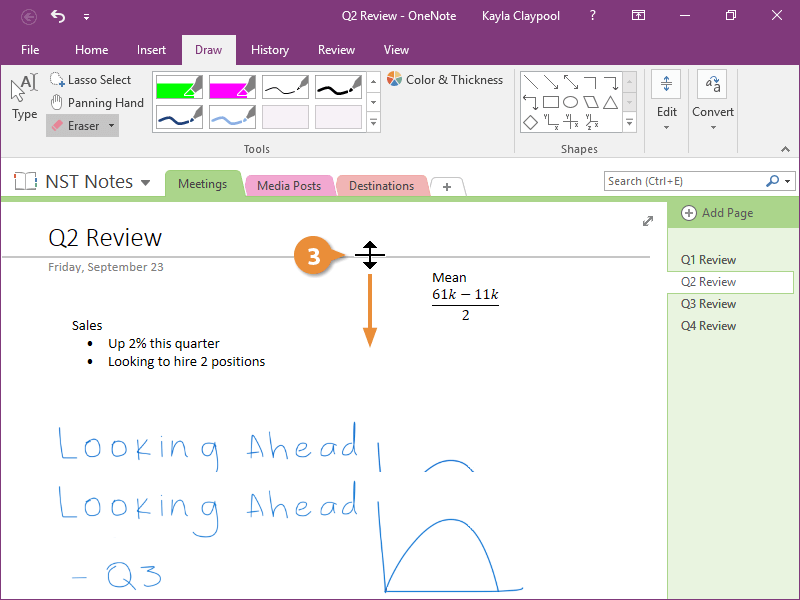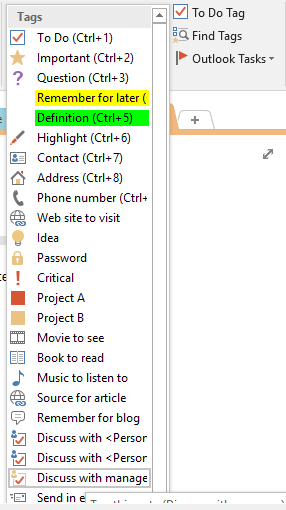
You’ll then see the option to either share notes with the meeting or take notes for yourself: If you don’t, you may need to expand the meeting window as sometimes the button disappears from view when the window is too small. The better way to do this, is actually from within the meeting invite itself.Įither from a new invite or even an existing one, you’ll see the Meeting Notes button: This is wonderful, however only works in one direction. There’s even a link to the original Outlook meeting invite. What you’ll now see is the page is converted to a place for meeting notes:Īny details from the meeting are carried over such as attendees, date & time, the invitation message, and any attachments.
#Disable onenote quick note windows 10#
(Let’s assume that’s actually the case, shall we? And not the reality that many IT pros and decision makers don’t know about, use or care about OneNote, and therefore don’t invest in helping their end users become proficient in its use.) Linked a OneNote page to an existing meetingįirstly, in OneNote we have the ability to link a page to a meeting in Outlook, which passes across a variety of details.Ĭreate a new page, and then in the Home tab of OneNote (the one that ships with Office, not the inferior Windows 10 version) find the Meeting Details button, press it, and then find the meeting you want to link to: Unfortunately, there’s no simple way to substitute OneNote instead of shared notes, however if you’ve done your adoption job well, then your users should already be familiar with OneNote and hopefully be daily users of it. While you should give yourself a pat on the back for doing a good thing, your job isn’t over yet. Navigate to the Content sharing section of the page, and there you will find the slider for Allow shared notes. Navigate to the Meetings heading, then Meeting policies.ĭepending on how you’ve set up your environment you may need to repeat this multiple times, however for the average organisation that has a single policy – click on the Global (Org-wide default) policy: Head to the Microsoft Teams admin center at. It’s one thing to not use the feature, it’s another to make it simply unavailable for end users to help them avoid the pitfalls of using it.ĭon’t get me wrong, the shared notes feature actually has some good Teams-specific benefits but falls drastically short when you realise that despite their best efforts – you don’t work exclusively in the Microsoft Teams application. Disabling the shared notes feature completely

But for the average user who sits through countless meetings every week it’s simply not practical from an access perspective. That may be fine for a recent meeting or one that you’ve pinned as the space is still active with chats, files, or other apps. Now that we’ve covered the backstory, how does this relate to shared notes in meetings?īecause it’s powered by the same wiki functionality, and similarly is only accessible by going back to the actual meeting space in your Teams meeting or chat history. At best you can open up the file and copy the contents.



mhtml file that exists in the SharePoint document library connected to the Team which unfortunately cannot simply be accessed or imported anywhere else. Any content you create cannot be accessed anywhere outside of that Team’s channel.īehind the scenes the wiki functionality uses a. The problem with the wiki functionality is that it exists in the Team only. However, as OneNote is an ecosystem unto itself, and Microsoft product teams are made up for regular human folks that want to get the job done and have valid reasons for doing things – the Microsoft Teams product team opted to remove the default OneNote tab and opted for their own native solution. When Microsoft Teams was in beta and first launched, there was no wiki tab. There are many people who remove it immediately when creating a Team, and others who have used custom provisioning solutions to avoid its creation in the first place. In fact, I abhor it, and I’m not alone in that. Let me start this by saying that I’m not a fan of the wiki feature in Teams.


 0 kommentar(er)
0 kommentar(er)
